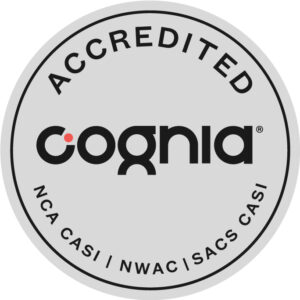
When students can simply Google or “Ask Siri” for the answers to common questions, teachers’ goals begin to shift from students filled with facts to students filled with thoughts. But in a world filled with technology, how do we get students to start thinking for themselves? As a result, educators are now reevaluating how critical thinking in education today should be taught.
Critical thinking is a broad term that covers a handful of different skills such as evaluation, analysis, interpretation, and synthesis of information. These skills are incredibly important to today’s students and tomorrow’s adults. It’s important for students to develop the ability to apply creative thought to information in order to solve a problem, develop an argument, or reach a conclusion.
It can help students improve relationships by helping them better understand themselves and others. As well as make well-informed decisions, encourage curiosity, and foster independence.
It’s easy to say “teach critical thinking skills” but how exactly are teachers supposed to do that? Here are some tactics to consider to encourage students to utilize critical thinking skills.
Research shows critical thinking is more effective when taught explicitly. Instead of just teaching critical thinking skills, educators should provide opportunities to use them. The continuous practice will help them to apply their skills on their own across academic subjects and in all areas of life.
Asking questions allows students to apply what they learned but also utilize problem-solving skills and quick thinking on their feet. In addition, asking questions is a form of modeling for students. By having the teacher ask questions, students can better understand how to examine an issue more critically. Then eventually, the students will begin to ask questions and drive lessons or discussions.
Decision-making is an important part of the critical thinking process as it allows students to apply knowledge and evaluate the final results. Students should gather information, consider it and then make a choice to better evaluate how good their critical thinking skills are.
This gives them an opportunity to apply what they’ve learned to different situations, weigh the pros and cons, then decide what’s best from a variety of ideas. But in order to encourage decision-making, educators should consider incorporating more student-led activities.
Help students make connections between the lesson and real-world situations. Students should be able to apply critical thinking skills to the situation and understand potential solutions, helping them apply prior knowledge to new contexts.
Creative thinking and critical thinking go hand-in-hand. In fact, it may be the key element to developing critical thinking skills. Students should learn how to reimagine a problem and use the information to create new solutions.
A great way to do this is by allowing students more control over activities. For example, give students all of the supplies needed for a project and let them decide how to put it together. Only provide instructions when needed and instead guide students to critically think and make decisions on their own.
At Renton Prep, we understand that incorporating critical thinking in education today is a key benefit to our students’ growth and future.
We believe that it’s important to always expand our educational methods to better serve our students. Our award-winning leadership is backed by research and developed with our students in mind.
To learn more about our teaching methods or if you have questions about enrollment, please contact us.

